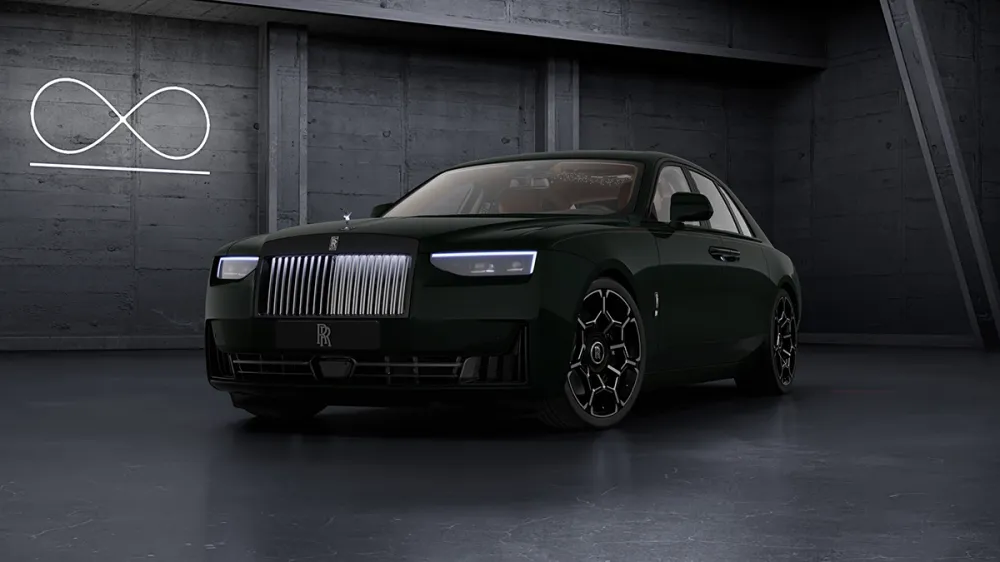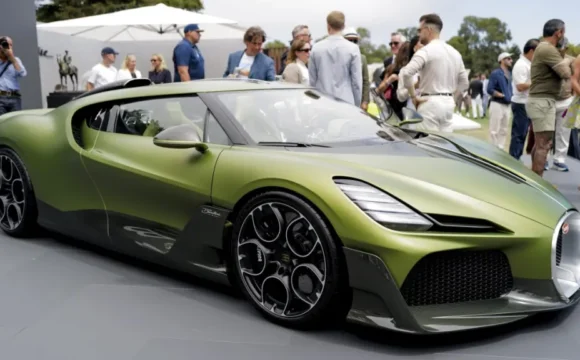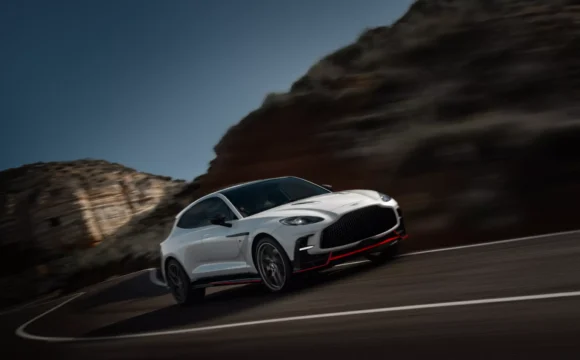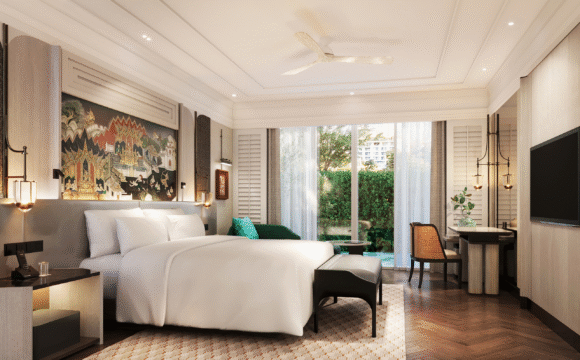Ultra-wealthy car buyers no longer want just the best; they want their own personal version of it.
It’s late June and New York is in the midst of a heat wave. The temperature hasn’t reached 100 degrees, but it may as well have thanks to the humidity, and I’m regretting my decision to venture out. But as soon as I set foot inside Rolls-Royce’s Private Office New York, I forgot any of the discomfort I’d felt seconds before.
Located at a secret address in Manhattan’s meatpacking district, the luxurious studio space is where some of the brand’s most valued customers come to help design their dream car. I’m there for an appointment with Nicholas Ryan, one of the marque’s bespoke client managers, and Cara Vitry, one of its bespoke designers, whom I met earlier in the month on a video call. The purpose of that conversation was to get a feel for my tastes and preferences, which is why the Cocteau Twins album Heaven or Las Vegas is playing over the stereo and there is a selection of pastries and tea waiting for me.
I don’t own a car, nor am I thinking of buying one. But the experience of working hand-in-hand with Rolls-Royce to design my own bespoke vehicle is enough to make me wonder if I should.
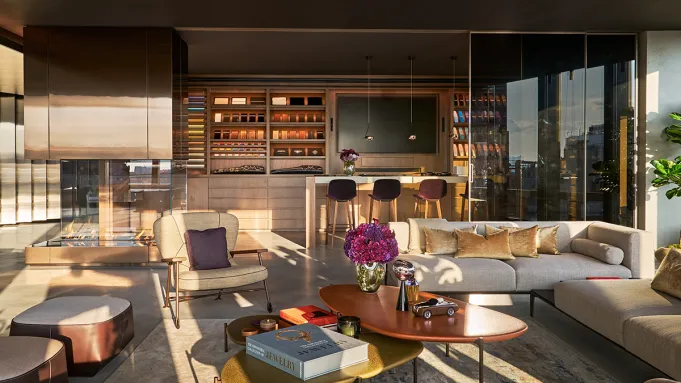
Rolls-Royce
Something strange has happened to luxury vehicles over the last decade. Not only are they selling better than ever before, but their exclusive nature stopped being enough for the ultra-wealthy. The consumers with the deepest pockets no longer just want the best; they want their own personal version of it.
Automakers have been offering different colors, trims, and interior options for about as long as they’ve been selling cars. But those shopping at the very top of the market—the 400,000 or so people with access to $30 million in spending money, according to CNN—increasingly don’t want to be limited by a pre-set menu of options. Instead, they want a brand-new finish that no one has ever seen, a cabin covered in a variety of premium materials, and a slew of signature details, like headrests embroidered with their personal logo, all of which they’ve helped design. And the auto industry has responded. It doesn’t matter if you’re talking about Bentley (Mulliner), Lamborghini (Ad Personam), or Porsche (Exclusiv Manufaktur), if an automaker sells vehicles for six figures or more, it probably has a bespoke division in 2025.
Ali Ansar, the head of Mulliner, said he first noticed a hunger for more personalization starting around 2010. Although some may write off this change as the rich spending money to spend it, the executive’s time at Bentley, and before that, McLaren Special Operations, has caused him to view it differently. To him, it’s an example of them just making an informed decision and buying something that best meets their needs and tastes.
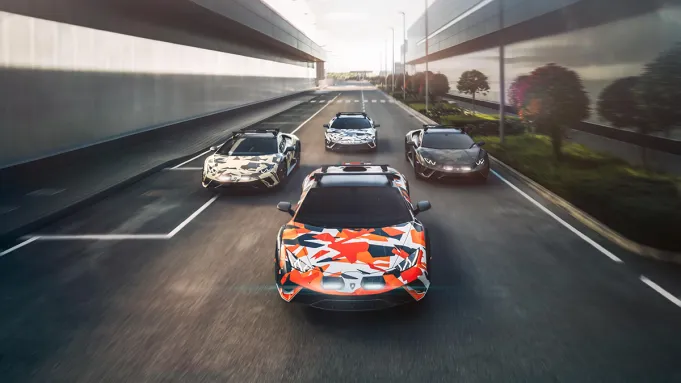
Lamborghini
“For many of our customers, [a vehicle is] a want as much as a need," Ali said. “And when it’s a want they want, they would like to put more of a personal stamp on it."
It’s not just luxury saloon buyers who are opting for unique two-tone paint jobs and even more plush upholstery. Those looking for supercars also want more of a say over just how outrageous their vehicle can look. Lamborghini told Robb Report that 94 percent of the vehicles it sells, and 95 percent of those sold in the U.S., have at least one option from its Ad Personam customization program.
The Italian supercar specialists sold 10,687 vehicles last year, which makes every example that leaves its factory exclusive. Despite this, the company’s chief marketing and sales officer, Federico Foschini, still sees a desire among customers for something even more unique. “I think one of the ways that you can get your exclusivity is to personalize the car and to make [it] your specific one," the executive told me.
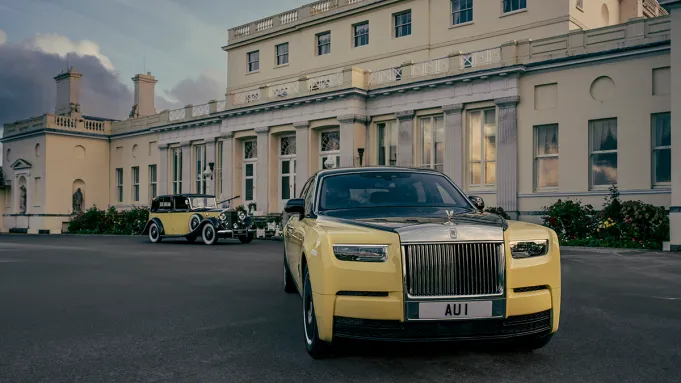
Rolls-Royce
There are few brands more closely associated with automotive personalization than Rolls-Royce. This has been true since its founding in 1906 but has become even more of a priority since the brand became a full subsidiary of BMW in 2003 and its current Goodwood headquarters opened.
“Bespoke is what defines Rolls-Royce Motor Cars," Jon Colbeth, the company’s North American president and CEO, told Robb Report in a statement.
This decades-long focus on personalization has also paid off for the brand. Last fall, its head, Chris Brownridge, told Bloomberg that increased demand for “bespoke and personal cars" had helped offset a dip in sales in China, one of its most important markets. This included vehicles with holographic paint finishes, detailed embroideries, and even 18-carat gold sculptures.
The company clearly doesn’t view the hunger for even more exclusive builds as temporary, either. In January, the company announced plans to invest £300 million, or about $400 million, to beef up its production facilities to build even more bespoke vehicles and ultra-limited coachbuilt models, like the one-off Boat Tail.
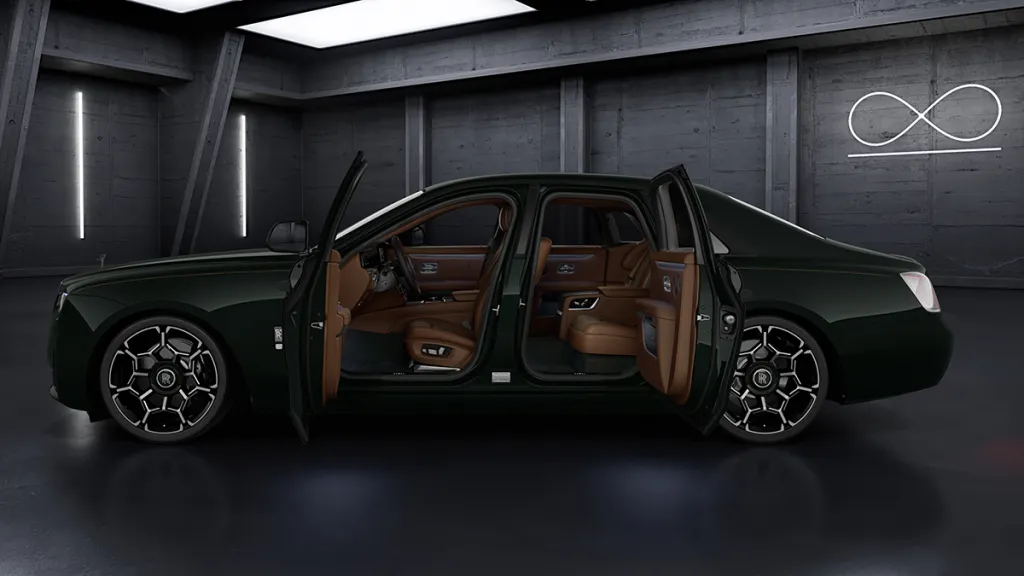
Rolls-Royce
Of course, the process isn’t one that’s open to just anyone. Any watch lover knows that to be granted access to Rolex’s most coveted models, you need to form a relationship with the brand. The same goes for Rolls-Royce and the Cullinan, Ghost, Phantom, and Spectre.
The company let me jump the line for the purpose of this article, but for everyone else the bespoke commission process starts at the dealer level. Once a customer has been referred to the bespoke team, a video call is set up so that everyone can get to know one another and figure out what model they want.
“What I always try and figure out is are you a driver or are you a rider?" Ryan told me over the phone, the week after our meeting. “Are you going to be sitting in the front, behind the steering wheel? [Or] are you going to ride in it?"
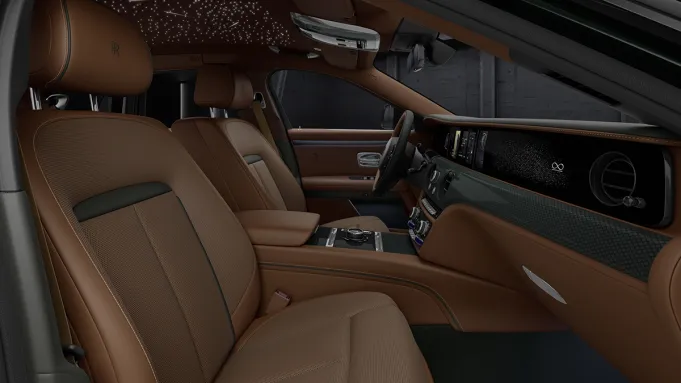
Rolls-Royce
Just as important as the vehicle I’d choose was what kind of story I wanted it to tell. Was this vehicle meant to celebrate the past or present a possible vision of the future? And just how much of my personality did I want to put on display? The company’s designers are well-versed in working someone’s family crest and other personal details into its design, both inside and out.
I won’t get my first look at what my imaginary Rolls will look like until a couple of weeks later. The next step is an in-person meeting, which, because I’m based in the Big Apple, happens at Private Office New York. During our call, we established that I wanted a more traditional Rolls-Royce, but with a more sporting character. That’s how we landed on the Black Badge Ghost, a commanding saloon a driver can have fun in.
During the call, I’d mentioned my affinity for the very British green-over-tan color combo. Vitry presents me with a rendering that shows a Ghost finished in Brewster Green, a sparkling hue that blends nicely with the variant’s darkened trim, including an illuminated, carbon-fiber Spirit of Ecstasy and 23-inch rims. Inside, the car has a distinctly warm feel, with everything from the steering wheel and seats covered in Rose Leaf and Saddelry Tan leather with Creme Light contrast stitching.
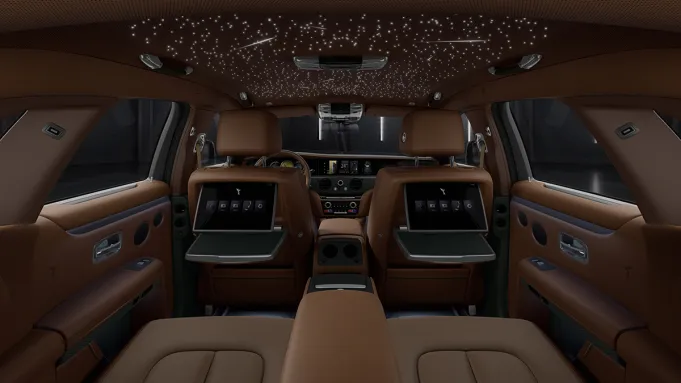
Rolls-Royce
There are also plenty of plush details throughout the cabin, including Pine Green-tinted carbon-fiber trim, Rose Leaf rotary controls, and illuminated treadplates. Vitry has also designed a version of one of the brand’s headline bespoke features, the Starlight headliner, that depicts the streets of Manhattan.
The bespoke process, like my car and visit to the private office, is tailored to the individual. That means there can be multiple meetings to finalize the design, or, as in my case, just one. Everything in Vitry’s design is something that the artisans at Rolls-Royce know they can realize, though there is room for the new and unexpected. The original Starlight headliner owes its existence to a customer who wanted a discreet lighting that would enable them to read the newspaper at night without distracting their driver.
Once the customer has signed off on their car, the dealer will place the order with Goodwood. The customer’s part of the design process is done at this point, but those who want to see how their car is built can arrange a trip to Goodwood to witness part of production. Building the commission takes roughly 12 months, but can be longer depending on the complexity of the options. Once the vehicle is complete, it will be delivered to the customer, which Ryan calls his favorite part of the entire process.
“I try and stand in front of them, and I see their face when they first see it for the first time," he told me. “I’m a people person. I get emotional with this stuff, but when I see people say, ‘Yeah, this is what I want.’ I think that’s the absolute best thing."
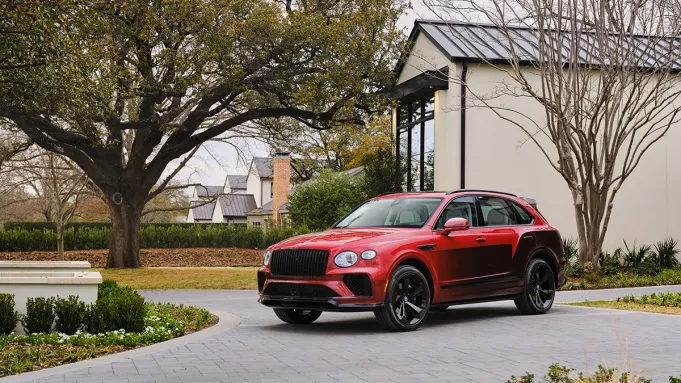
Bentley
Luxury does not come cheap. This is doubly true when you start to personalize it. Brands at this end in the market are loath to publicize just how much their most exclusive offering cost, but there’s a reason for this: their customer base frequently doesn’t care.
“It’s a bit like, you know, walking into a Hermes shop and asking, how much is the Birkin bag?" Ali said. “If you need to ask, then you shouldn’t, you shouldn’t be in the shop."
Rolls-Royce wouldn’t tell how much my Ghost cost, but the price of actually building my design would likely exceed the Black Badge’s $422,750 starting price by a decent amount. But when you go bespoke, you’re not just buying a car, you’re also paying for the experience of getting to collaborate with some of the world’s most talented automotive designers.
It’s also important to remember that these cars are investments, as Colbeth noted in his statement. “In many cases, a Private Office commission includes Bespoke content that exceeds the base MSRP of a Phantom, Cullinan, Spectre, or Ghost," the statement reads. “Private Office fits perfectly with our strategy of increasing value, not volume."
Someone may not buy a car with someone else’s name on it, but they’re not going to be put off by buying something that is legitimately one-of-a-kind. The auction results speak for themselves.
From the article by Bryan Hood

